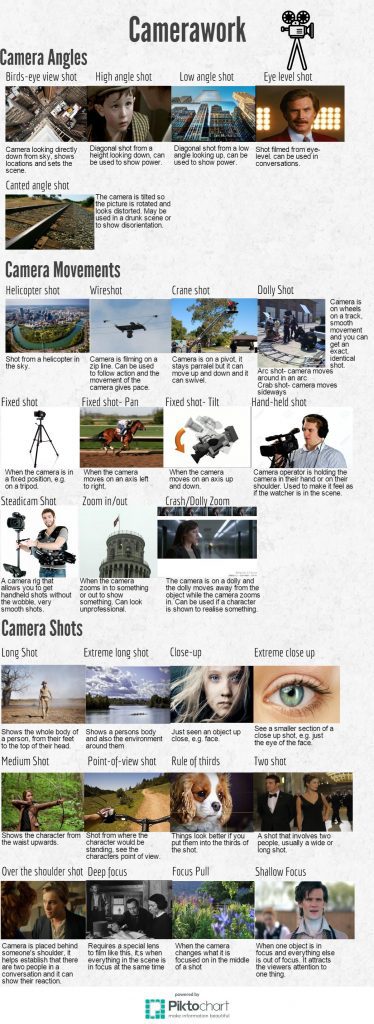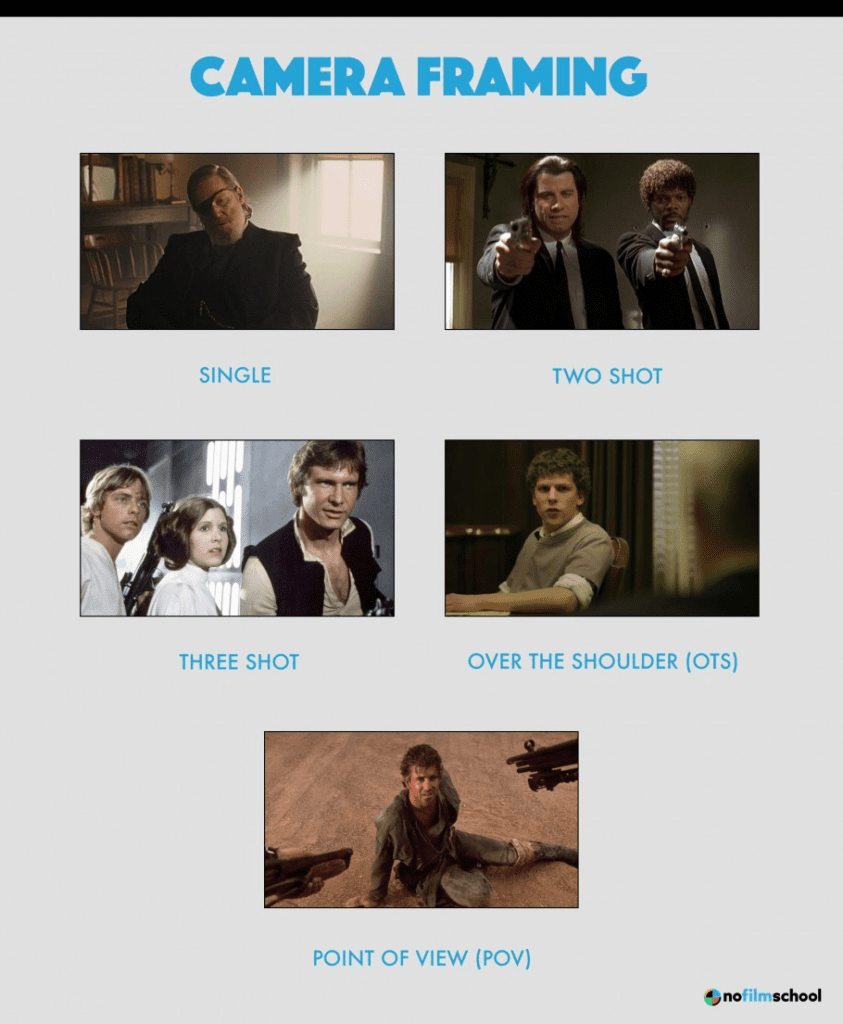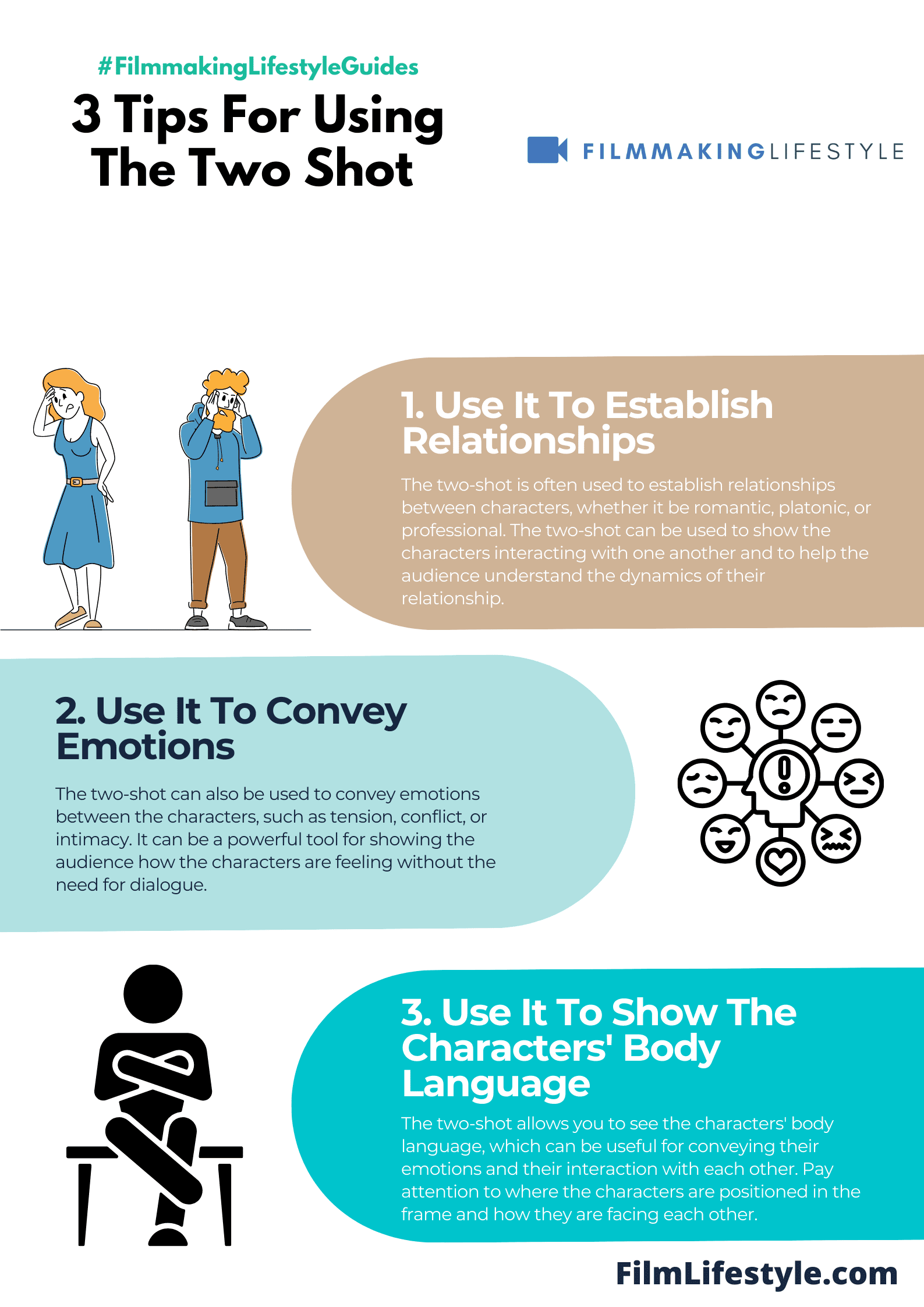Two shots are photos taken from different angles simultaneously by having both subjects stand back-to-back.
This creates more context through which we can understand the scene, adding depth and nuance that would otherwise be lost when viewed from only one perspective.
THE TWO SHOT
What Is The Two Shot?
The two shot is an editing technique that was introduced by famed director Stanley Kubrick, which he used in his films like 2001: A Space Odyssey.
The two shot is a form of continuity editing that uses two shots at once to tell one story.
It has been around for decades but was not popularized until Mr. Kubrick’s use of it in his movies became well known.
In the world of filmmaking, a two shot is a fundamental technique that captures a pair of characters in a single frame.
It’s a powerful way to showcase interactions, relationships, and dialogues, creating a dynamic scene that draws viewers deeper into the story.
We’ll explore the nuances of the two shot, its impact on narrative storytelling, and why it’s a favorite among directors for establishing character dynamics.
Stick with us as we jump into the art of the two shot and how it’s used to bring cinematic stories to life.
What Is A Two Shot In Filmmaking?
In the realm of visual storytelling, mastering shot composition is crucial.
A two shot is a type of framing that captures two people within a single frame, emphasizing the interaction between them.
This technique is not just about placing two actors side by side; it’s a deliberate choice that underscores their relationship.
Directors often leverage two shots to convey a narrative without the need for dialogue.
By observing the actors’ body language and facial expressions, audiences can infer a wealth of information.
The power of a two shot lies in its simplicity and effectiveness in communicating relational dynamics.
Some classic examples of two shots can be found in iconic films like Casablanca and The Godfather.
These shots are pivotal moments where characters share the screen, allowing viewers to become intimate with their shared experience.
Through a two shot, emotions can ripple across the screen, binding audiences to the characters’ journey.
We must also consider the variations within two shots –
- Over-the-shoulder shots show a conversation with a slight focus on one character’s perspective.
- Profile shots capture both characters in side view, often used for intense or confrontational scenes.
Each variation of the two shot can serve a different storytelling purpose, making it an essential tool in a filmmaker’s arsenal.
Agile and adaptive, the two shot remains a fundamental aspect of cinematic language, one that transcends genre and era.
We recognize the nuances each type of two shot offers, paving the way for deeper audience connection and storytelling that resonates on a personal level.
The Importance Of The Two Shot Technique
In cinema, the judicious use of the two shot technique plays a pivotal role in character development and plot progression.
By placing two characters within the same frame, filmmakers can craft a more nuanced and layered narrative.
This approach is particularly effective in scenes demanding a show of intimacy, conflict, or a pivotal exchange that propels the story forward.
We see this technique employed across various genres, from the close-knit camaraderie in buddy films like Shawshank Redemption to the complex relationship dynamics in romantic dramas such as The Notebook.
The subtleties of a two shot can communicate volumes, bridging the gap between viewer and character.
The two shot also greatly benefits the editing process, offering a fluid transition between single shots and group sequences.
Editors can move with ease between perspectives without disorienting the audience.
Here are some advantages of utilizing a two shot:
- Enables a natural flow in conversations,
- Captures reactions and interactions simultaneously,
- Establishes spatial awareness among characters.
also, with a two shot, we’re invited to jump deeper into the characters’ world.
Our understanding of their relationship is enhanced not by what is said, but by what is shown.
Think about scenes where no words are necessary – a glance or a touch within a two shot setup can speak louder than dialogue.
The significance of the two shot extends to its impact on a film’s pacing and rhythm.
Dynamic interactions within a two shot can infuse a scene with energy or slow it down to draw attention to a critical moment.
Its versatility makes the two shot an indispensable element in our filmmaking toolbox.

With each scene, the intention behind a two shot evolves.
Whether to build tension or foster understanding, we craft these moments with utmost care, always aiming to create an emotional resonance that transcends the screen.
How Two Shots Contribute To Narrative Storytelling
The two shot is a dynamic tool in narrative storytelling.
It immerses viewers in the intimate space between characters, making dialogue-heavy scenes more engaging.
In contexts where actions and expressions are pivotal, the two shot captivates the audience by showcasing subtle non-verbal cues that enrich the narrative.
Films often leverage two shots to highlight pivotal moments of character interaction.
The proximity of actors within a single frame intensifies the emotion, capturing the essence of their relationship.
Whether reflecting tension, affection, or rivalry, two shots draw viewers deeper into the story, making pivotal moments more impactful.
Consider how the two shot can pace a scene:
- It allows for a seamless ebb and flow in dialogue,
- It shows the contrast in character dynamics in real time,
- It momentarily sidelines the broader setting to prioritize the interpersonal.
Without the need to cut back and forth between single shots, the two shot holds our attention firmly on the interaction.
In Casablanca, for instance, the use of two shots sells the romantic tension between Rick and Ilsa.
This technique keeps the audience locked into their world, their history, and the emotion of the scene.
Incorporating two shots means not just showing conversations, but crafting experiences.
Directors capitalize on this by using these shots strategically to convey complex layers of a narrative.
Later, two shots are instrumental in sculpting scenes that feel real and stories that resonate long after the credits roll.

The immersive power of the two shot comes from its contribution to visual storytelling.
It brings forth a narrative richness that relies less on dialogue and more on the physical interplay between characters.
Our ability to observe both reactions and interactions simultaneously provides a holistic view of the storyline, often leaving a lasting impression on our connection to the film’s emotional core.
The Art Of Capturing Character Dynamics With A Two Shot
In the realm of visual storytelling, mastering the two shot opens a window to the subtle intricacies of character interaction.
Harnessing this technique, we can unveil the unspoken tensions or harmonies that exist between characters.
Crafting a compelling narrative often hinges on the relationship between characters, and the two shot is a pivotal tool in this process.
It lets us focus on the chemistry or conflict present in a single frame, magnifying its significance in the story.
Knowing when and how to Use a two shot can significantly alter the audience’s perception of a scene.
Consider these instances:
- Establishing dominance or submissiveness between characters,
- Revealing hidden alliances or rivalries,
- Portraying moments of closeness or detachment without a word of dialogue.
While dialogues punctuate a script with information, two shots rely on the visual cues.
We’re often able to shape a deeper understanding of a character’s motivations and feelings through what’s left unsaid.
In The Godfather, for instance, two shots are vital in conveying the complexity of the Corleone family dynamics.
The camera dances around these figures, capturing a landscape of emotion and power exchanges without the need for excessive dialogue.
The choreography of actors within a two shot must be meticulously planned to achieve the desired effect.
Positioning, movement, and the gaze of the characters all play a role in the narrative constructed by the frame.
Two shots contribute not just to the narrative but to the visual composition of a film.
They create a balance within the frame that is both aesthetically pleasing and functional in driving the story.
It’s essential for us to blend technical prowess with a deep understanding of the characters we’re depicting.
Each two shot we craft is a statement of purpose, a slice of life that has the power to resonate with audiences on a visceral level.

Examples Of Memorable Two Shots In Film
Two shots have the uncanny ability to lock us into the intimacy of a character duo, etching their relationship into our memories.
One iconic example is the intimate two shot of Jack and Rose in Titanic – their figures leaning into one another, the vast ocean stretching behind them, visually amplifying the boundlessness of their love.
In The Godfather, the subtle power dynamics between Michael and Vito Corleone are masterfully captured in two shots that speak volumes about their complex relationship.
This technique draws us closer, allowing us to feel the weight of their silent exchanges and unspoken understandings.
We can’t talk about two shots without mentioning Pulp Fiction, where the dynamic between Jules and Vincent is effortlessly established.
The witty banter and tension-filled exchanges are heightened by the effective use of close two shots that keep us engaged in their every word and reaction.
Consider these additional landmark films where two shots were vital:
- The Shawshank Redemption uses a two shot for Andy and Red, symbolizing their deepening friendship against the backdrop of prison life.
- In Thelma & Louise, the final two shot of the protagonists captures the essence of their liberating, yet doomed journey. Two shots can transcend the script, breathing life into the storyboards that dictate the visual storytelling of a film. They’re not just framing techniques; they carry the emotional pulse of the narrative, as seen in Casablanca, where Rick and Ilsa’s closeness and distance are portrayed through revealing two shots.
Our understanding of cinematic language is often shaped by these moments where cinematography does the heavy lifting.
Two shots in La La Land dance us through the characters’ romance, with the camera capturing their interactions so intimately that we feel part of their world.
As we explore the canvas of filmmaking, it’s clear that two shots are about more than just two people in a frame.
They encapsulate emotions, history, and the unspoken, demonstrating that sometimes silence and a well-composed image can convey what pages of dialogue cannot.
What Is A Two Shot In Filmmaking – Wrap Up
We’ve seen how two shots are fundamental in filmmaking for showcasing relationships and dynamics between characters.
They’re not merely a method of composition; they’re a storyteller’s silent ally.
Whether it’s the closeness of Jack and Rose or the Corleone’s unspoken tension, two shots speak volumes.
They’re a testament to the power of visual storytelling where actions truly speak louder than words.
Let’s not forget that the next time we’re captivated by a film’s narrative, it might just be the magic of a well-executed two shot at work.
Frequently Asked Questions
What Is A “two Shot” In Filmmaking?
A “two shot” is a film technique where two people are captured within a single frame, emphasizing their relationship and interactions.
Why Do Filmmakers Use Two Shots?
Filmmakers use two shots to convey narrative and character dynamics non-verbally, often utilizing the actors’ body language and facial expressions.
Are There Variations Of The Two Shot?
Yes, variations of the two shot include over-the-shoulder shots and profile shots, each serving a unique storytelling purpose.
Can You Give An Example Of A Two Shot In Film?
A classic example of a two shot is the intimate frame of Jack and Rose in Titanic, highlighting their romantic connection.
What Can A Two Shot Convey In A Narrative?
A two shot can convey complex relationships, emotional states, and the essence of a character duo, often more effectively than dialogue.


